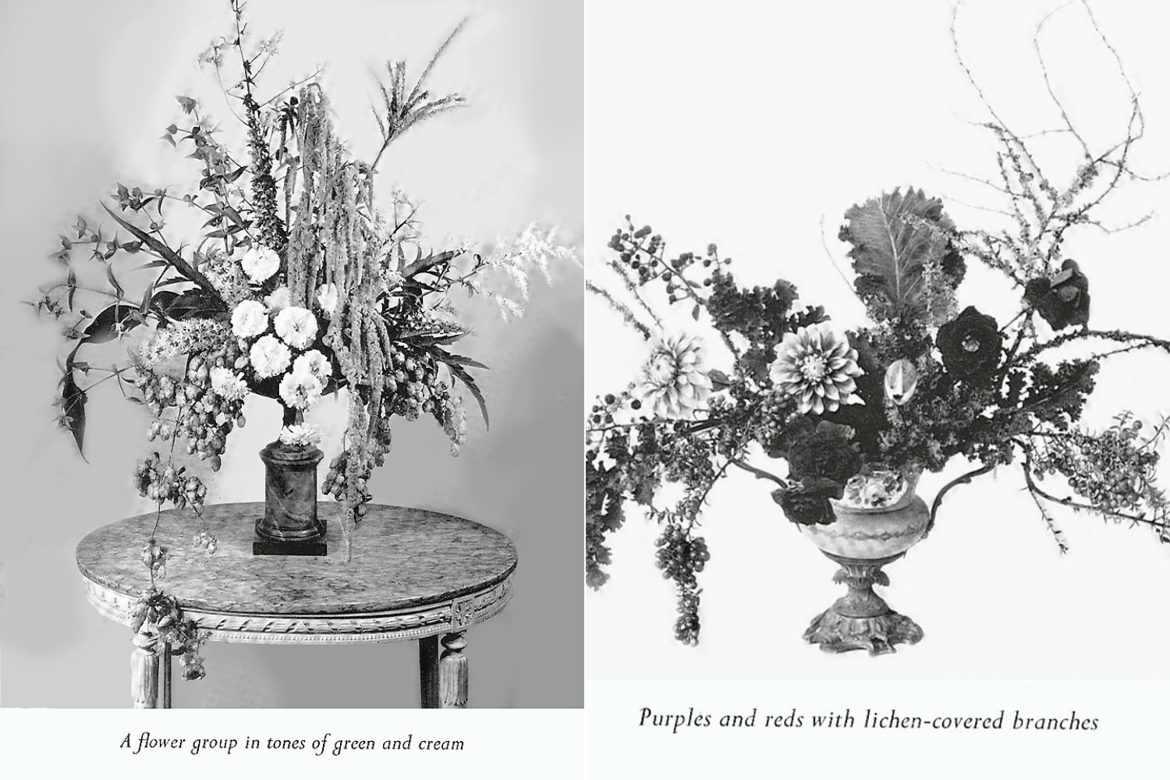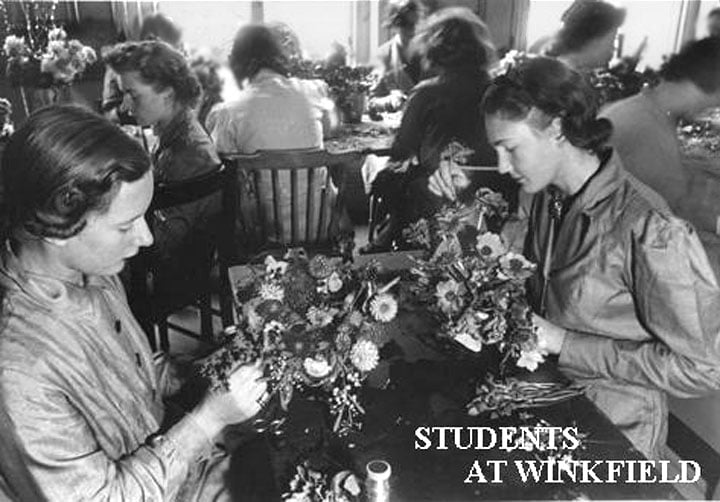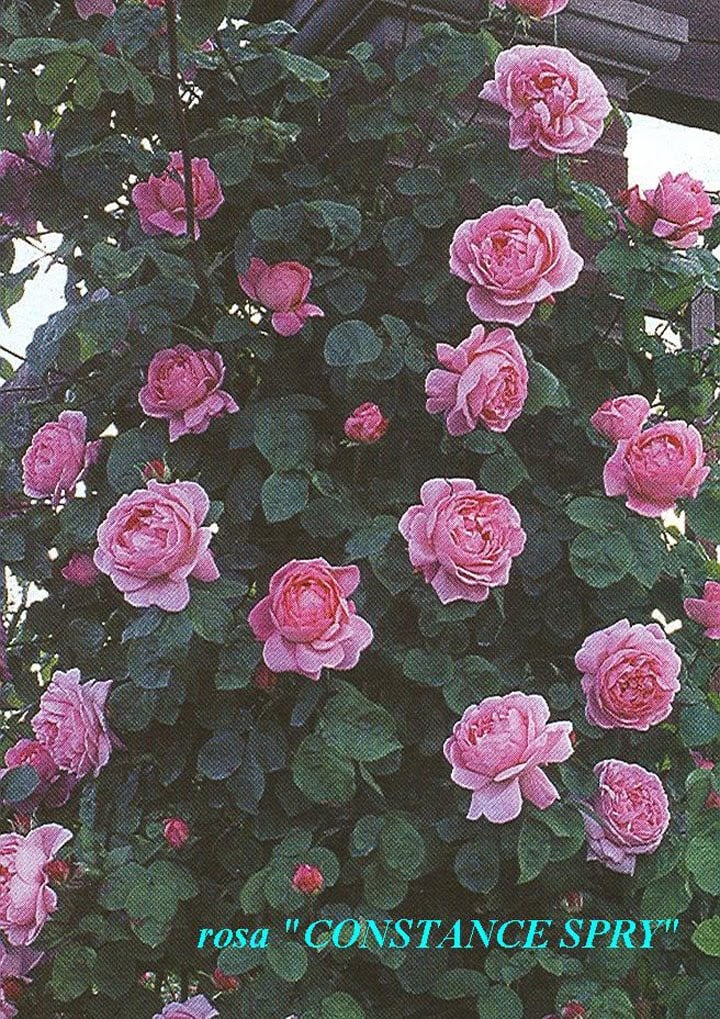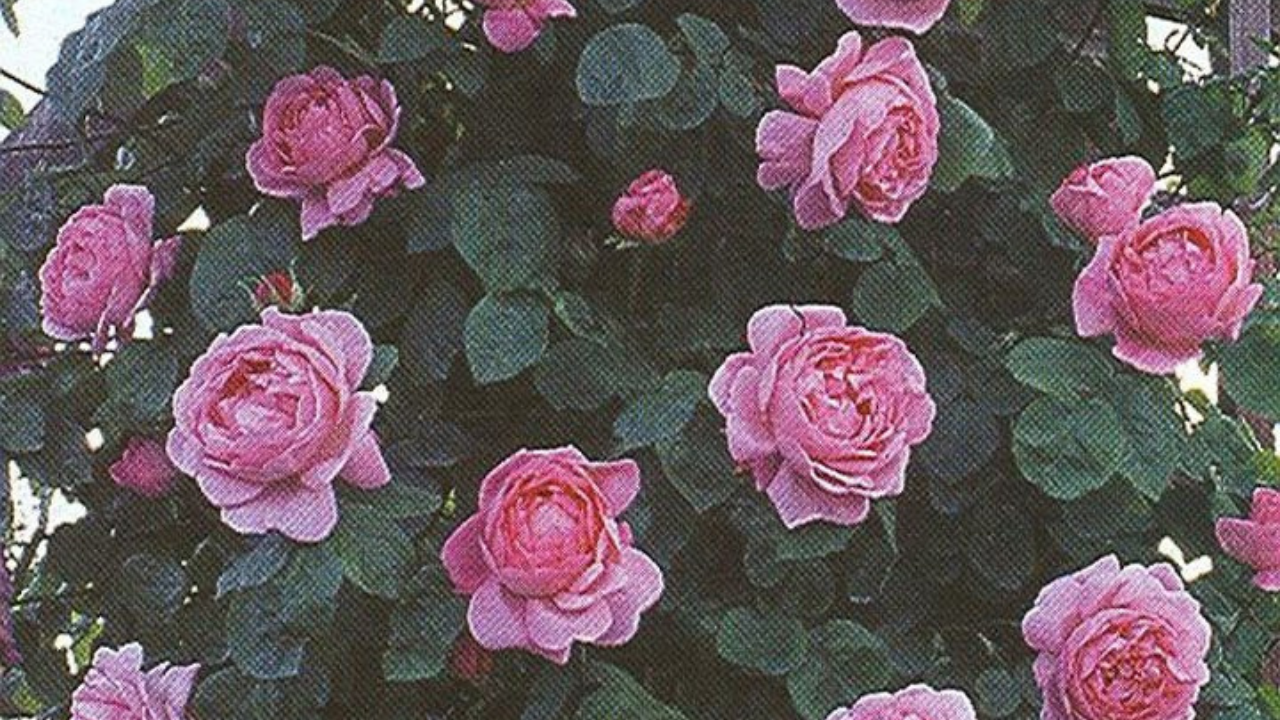Constance Spry | Part Three
We're back with part three of four of our Constance Spry series as we continue celebrating Women's History Month!
Part Three: A Brief Biography of Constance Spry
Constance Spry, née Fletcher, was born in 1886 in Derby, England, but grew up in Ireland. Her father had ambitions to move up in the Civil Service and accepted a transfer there, where Constance was encouraged to study hard in school. After school she spent one year at college studying Nursing, including Physiology and Hygiene, and the became the first full-time paid lecturer of the Women’s National Health Association. In 1910 she married her first husband, James Heppell Marr. They moved to a remote house in the countryside of Ireland, at Coolbawn, but many miles from any village. It was here she started to garden, motivated by the need to grow produce due to the isolated nature of the house. She did develop an interest in growing flowers at this time, and developed a life-long passion for gardening. When WW1 broke out in 1914, Constance became secretary of the Dublin Red Cross. She gave birth to a son, Anthony Marr, but the marriage itself became increasingly unhappy, and the relationship deteriorated to a point whereby Constance felt she had no choice but to leave. In 1916 she moved to back to England with her son, joining the war effort, working as Director of Women’s Staff at the Aircraft Production Unit. It was at this time she came to know the department’s Head of Personnel, Henry “Shav” Spry, a man she was to later marry.
After the war, she returned to social and welfare work, and in 1921 she accepted an appointment to be headmistress at Homerton and South Hackney Continuation School. This school was located in a desperate and extremely poor part of East London, and provided an outreach program designed to give teenage females employed in factories a broader education in practical skills. Constance focused on skills such as cookery and dress-making, believing that an understanding of these disciplines would be useful if an individual endeavored to improve the quality of their life. She would bring flowers to school such as a posy of violets or a vase of peonies, no doubt to bring a little levity to the bleak environment. She noticed that her students derived an immense amount of pleasure from the flowers, and seizing on that observation, started to teach the girls that every single person could have their lives brightened and enriched by the presence of cut flowers, even in the poorest home.

At that time flowers, and flower arrangements, were only to be found in the homes of the wealthy, who could afford to buy cut-flowers, or in the homes of families with large gardens, generally out in the suburbs. She taught her students how to make arrangements, as well instructing them in flower care, and demonstrated that it was imagination, not money, that was the essential ingredient for making a floral design. For Constance too, flowers were an “antidote to…(the poverty) and the dreary surroundings” and on weekends she started foraging and gathering all manner of floral materials, and started experimenting with arrangements.
In 1926, Constance married her second husband, Mr. Henry Spry, who encouraged and supported her gardening and floral activities. Constance Spry started doing arrangements for other people, mostly arrangements for dinner parties, and décor for the homes of her friends. Working out of her home, she secured a modest weekly order from Granada Cinemas, which was a chic destination in those days. At one such party, she met a theatrical designer, Norman Wilkinson, who was designing a scent shop and who wanted it to be completely different from any other store. He insisted that she do the flowers and gave her the commission to do the windows at Atkinson’s.
Constance Spry writes of that moment; “Unconsciously, I think, I had struck a moment when people were getting tired of the conventional set pieces made by the professional florists and were not entirely satisfied with purely amateur arrangements. In any case requests for flower arrangements came in thick and fast, and I decided to embark on a small shop.”
It should also be pointed out that, up until this moment, floristry had been almost exclusively the domain of men, and I propose that part of the excitement caused by Constance was the fact that she was a woman challenging this male bastion. In fact, Constance was to challenge many social barriers in her life, but always with a dignity and restraint that was the hallmark of her station and her generation. Heeding the advice of Norman Wilkinson, and with the support of her husband, Constance Spry, resigned from teaching and opened her shop “Flower Decoration” in 1928. Afraid of risking much money on the venture, she took a small shop with inexpensive rent in a less popular part of London. She came to rue that decision later; “To intending shop-keepers I would say, never do this. Financially it is fatal. It was not until I was able to get into a good location that the shop itself was financially satisfactory.” Indeed, in 1934 Constance opened up in Mayfair around the corner from Atkinson’s, and in the same year she published her first book, also named “Flower Decoration”.
-1.png?width=1170&name=Constance%20Spry2%20(2)-1.png)
Her fame was growing, and her services much in demand. She was also becoming much sought after as a guest at all the fashionable parties in London, and an invitation to her home was most desirable as she was an intelligent and creative hostess. She became close friends with Syrie Maugham, a noted interior designer and former wife of Somerset Maugham, with King Edward VIII (Duke of Windsor) and Gluck, a female artist, known today notably for her paintings of flowers, particularly Calla Lilies.
In 1932 Constance became intimate friends with Hannah “Gluck” Gluckstein. She contributed greatly to the artist’s first exhibition at the Fine Arts Society in the same year, doing floral arrangements and interior décor. Gluck, as she insisted on being called, was a talented painter. Rather remarkable for the era, Gluck wore men’s clothes her entire adult life, and only dated other women. Nonetheless, from 1932 until 1936 Constance would stay three or four days per week at Gluck’s house in Hampstead.
Fred Wilkinson of Constance Spry Ltd. insists this was a purely platonic friendship, based on their mutual interests in many subjects, but particularly the arts and flowers. There is no evidence that would contradict Mr. Wilkinson’s statement, but even as a friend, Constance Spry was surely testing the limits of social acceptability through her close association with Gluck. Constance introduced the painter to many of her own clients, as well as to Elsa Schiaparelli, who designed male/female clothes for Gluck. It is more than likely that the relationship was terminated in 1936 by Constance Spry, because the liaison was becoming onerous on her reputation, and Gluck had worn out her welcome with Mrs. Spry’s clients.
.png?width=1170&name=Constance%20Spry2%20(3).png)
In January of 1938 Constance was invited to give two talks at the annual benefit of the Women’s Auxiliary of the Brooklyn Botanic Garden. It was a popular choice, as by this time she was the florist for the British aristocracy, and had just done Wallis Simpson and the Duke of Windsor’s wedding in France. She did meet some derision, however, for her use of vegetables, vegetable leaves and fruits in arrangements, as well as her antipathy towards the Japanese style of arranging that was prevalent in America. Her perception was that Ikebana, while an integral part of Japanese culture, looked contrived and out of place in American homes. Nonetheless, there were obviously people who agreed with her point of view as some of New York’s society hostesses bankrolled a shop in Manhattan, Constance Spry, Inc. Unfortunately, the outbreak of WWII curtailed any hope of regular visits to New York, and unable to return, the shop was eventually sold.
After the war ended, she started a residential school with her good friend Rosemary Hume, an accomplished cook in her own right, at Winkfield Place, near Windsor, England. The academy was quite large, and was situated on a large estate comprising 22 acres. This academy specialized in what was then termed “Domestic Science”, specializing in what was presumed to be legitimate pursuits for young women, cooking, gardening, interior design and flower decoration. Constance Spry had been teaching floral arrangement ever since she moved into the shop on South Audley St., but had done so reluctantly because, as she said, “I felt to do so might involve them in disappointment; opportunities for earning a suitable livelihood seemed extremely scarce.” However, and in large part due to her activities, by the time she opened the school in 1946, there were employment opportunities and liberated young women willing to learn a discipline. At Winkfield Place, along with school, there were 7 acres under intense cultivation, providing cut-flowers for the business, as well as fresh produce for the school. There were open pastures, woodland and wild areas, as well as 1200 rose bushes planted throughout the property that were also used for cut flower production. Constance was not particularly fond of the new hybrid tea roses, with their lack of fragrance and high-centered, “chocolate-boxy” appearance. She was captivated by old, scented roses and had always grown modest amounts at her house, but with the acquisition of Winkfield Place, she embarked on a comprehensive collection for her floral business.

Her love of old roses led her to friendships with many of the English rose breeders of the era, the up-and-coming David Austin amongst them. One of her enduring legacies is the namesake rose David Austin developed. "Constance Spry” was a pivotal rose for David Austin, as it was the first of his now-famous “old English” roses that he has developed, with the trademark myrrh scent. Unfortunately she did not witness it’s commercial introduction in 1961, although both Fred Wilkinson of Constance Spry Ltd., and Helen Caine of David Austin Roses, UK, suggest she undoubtedly saw it in trials.

Constance Spry worked assiduously until her death in 1960, tending to her flower shop, teaching at the school, presenting lectures and was actively involved with the Chelsea Flower Show. In 1953 Constance was honored to be asked to do the flowers for the Coronation of Queen Elizabeth II, which was a huge undertaking, involving Westminster Abbey, the decoration with flowers of the entire processional route, as well as Buckingham Place. Between 1934 and 1959 she wrote eleven books in all, ten books on flowers, and one with Rosemary Hume called “The Constance Spry Cookery Book”. The books were published all over the world, and some continue in print to this day. In 1957 she wrote “Simple Flowers ‘A Millionaire for a Few Pence’”, in which she continued to emphasize that imagination was the key to improving quality of life, and she demonstrated that flowers could go a long way towards this end.
Almost twenty years earlier Constance Spry had written, in the last paragraph of the introduction to “Garden Notebook” some words that she lived by her whole life: “Perfection in living seems to me to consist not in the spending of large sums of money but in the exercise of a selective and discerning taste in the use of what we may possess, and flowers and plants can in their judicious use contribute in a high degree to the elegance and graciousness of life.”
Acknowledgments:
I should like to thank Mr. Fred Wilkinson, and Mr. Bruce Frost, of Constance Spry Ltd for their assistance, and also for permission to use the photographs, and quotes. I am extremely grateful to them as this article, in four parts, would not have been possible without their cooperation. Flower Decoration, and Garden Notebook, by Constance Spry, I can highly recommend.
